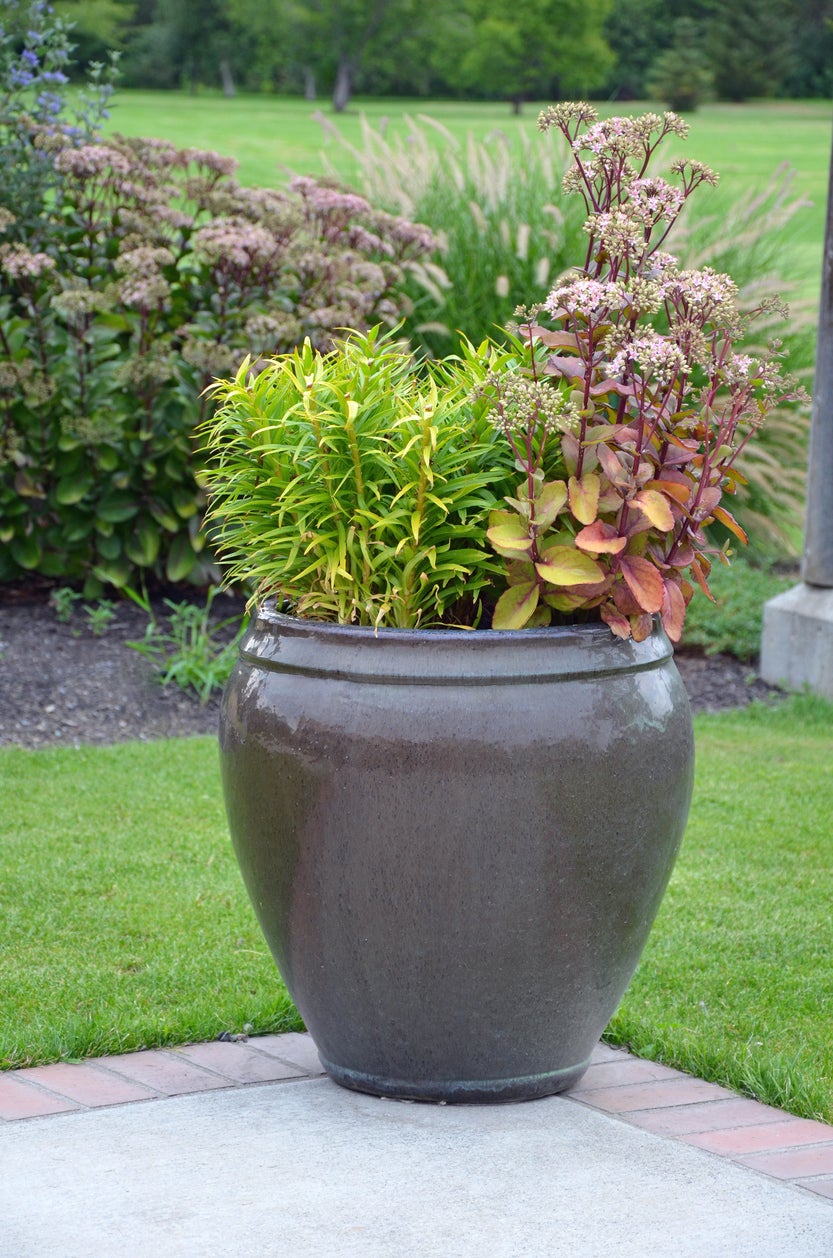Urn Gardening Tips And Ideas: Learn About Planting In Garden Urns


Container gardening has long been popular with vegetable gardeners, as well as anyone wishing to add appeal to their homes with ornamental plantings. In recent years, planting in garden urns has become especially popular. Not only are these urns sturdy, but they offer growers a unique garden aesthetic. Let’s learn more about how to use a garden urn planter in your landscape.
What is a Garden Urn?
A garden urn planter is a type of unique container, usually made of concrete. These larger containers are generally very decorative and ornate. Unlike conventional containers, urn gardening offers growers the opportunity to create elegant plantings without much effort or fuss.
Planting in Garden Urns
Before planting in garden urns, growers will first need to establish whether or not the selected urn has drainage. While some containers will already have drainage holes, others may not. Since most urns are made of concrete, this may present a conundrum. If there are no drainage holes in the urn, growers should consider a process called, “double potting.”
Simply, double potting requires that plants are first planted into a smaller container (with drainage) and then moved into the urn. At any point in the season, the smaller pot can then be removed to maintain adequate moisture.
If planting directly into the urn, fill the bottom half of the container with a mixture of sand or gravel, as this will improve the container’s drainage. After doing so, fill the remainder of the container with a high quality potting or container mix.
Begin transplanting into the garden urn. Be sure to choose plants that will grow proportionally to the size of the container. This means gardeners will also need to take the plants’ mature height and width into consideration.
Many choose to plant urns in groups of three: thriller, filler, and spiller. “Thriller” plants refer to those which make an impressive visual impact, while “fillers” and “spillers” grow lower in the urn to take up space within the container.
Gardening tips, videos, info and more delivered right to your inbox!
Sign up for the Gardening Know How newsletter today and receive a free copy of our e-book "How to Grow Delicious Tomatoes".
After planting, water the container well. Once established, maintain consistent fertilization and irrigation routines throughout the growing season. With minimal care, growers can enjoy the beauty of their garden urns all summer long.

Tonya Barnett has been gardening for 13 years. Flowers are her passion. She has transformed her backyard into a cut flower garden, which she regularly chronicles on her YouTube channel http://www.youtube.com/@tonyawiththeflowers.
-
 Looking For Plants To Give You The Soft And Fuzzies? Try These 5 Fuzzy Leaf Plant Options
Looking For Plants To Give You The Soft And Fuzzies? Try These 5 Fuzzy Leaf Plant OptionsLovers of texture, drama, silver foliage and tactile plants will adore these special sensory garden additions. These fuzzy leaf plant options will leave you all aglow
By Susan Albert
-
 Get Ready For A Summer Of Hummers! Grow These Full Sun Hummingbird Plants and Flowers
Get Ready For A Summer Of Hummers! Grow These Full Sun Hummingbird Plants and FlowersIf you’re lucky enough to enjoy a sunny backyard, make sure you are maxing out on your pollinator opportunities and grow these full sun hummingbird plants and flowers
By Tonya Barnett